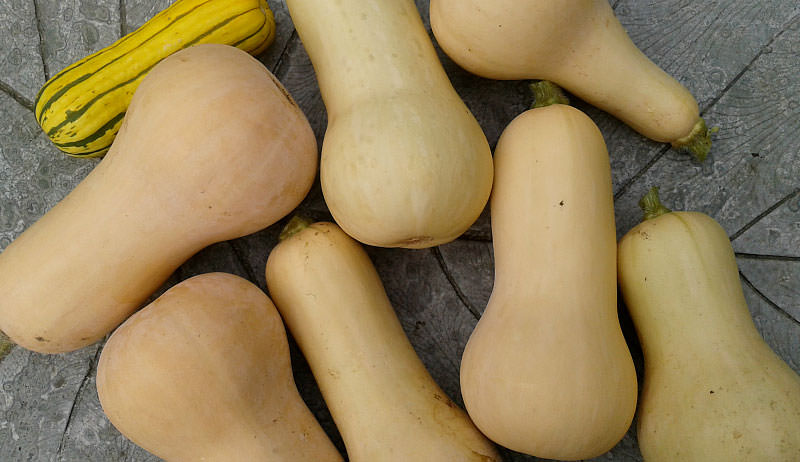
Each autumn I collect as many fallen leaves as possible. I rake them off our lawn, nab garbage bags of leaves from trash piles, and ask the guys who suck the leaves up off the neighbor’s lawn to dump them on our side of the fence. Why? Because a few years ago, when I was trying to figure out how to grow squash without having to build up mounds of soil, I discovered the ease of growing squash in squash rings.
What Are Squash Rings?
Squash rings are raised rings of 12-inch-tall chicken wire filled with decomposing leaves. Each ring is about 3 to 4 feet in diameter, though you could make them much larger if you have the room. I have about six rings in my garden, and each autumn I place the rings in a new spot the garden and fill them with all those collected fall leaves. I fill them all the way to the top, and then I toss a few shovels full of garden soil on top of the leaves to stop them from blowing away.
By the time spring arrives, the leaves have begun to decompose, so I top the rings off with a little compost and use a pitchfork to mix it all together before planting.
Using Squash Rings
After mixing the compost into my filled squash rings, it’s time to plant my squash. I grow primarily winter squash varieties, like butternut, acorn and delicata, in my squash rings, but you could also use them to grow pumpkins, gourds or even melons. Any vine crops would work.
I plant three to five seeds per squash ring, pushing each seed down into the decomposing leaves with my thumb and spacing them about 6 to 8 inches apart. If your squash rings are larger, you can certainly plant more seeds per ring.
As long as your compost is weed-free, your squash rings will be, too, so there’s seldom a need to mulch or weed squash plants when they’re grown in squash rings. The rotting leaves hold a lot of moisture, too, and the squash roots readily grow down through them and into the soil below, lessening summer watering chores.
In between the rings, I always mulch with a few inches of shredded leaves or straw. The vines will tumble over the edges of the squash rings, and this mulch keeps the fruits clean and helps cut down on weeding chores. You can also plant fast-maturing spring crops, like lettuce and radish, in between the rings. By the time the squash plants really get going, these early crops will have been harvested. It’s a great way to grow several crops in the same area to maximize production.
End-Of-Season Maintenance
When fall arrives and the last of the squash have been harvested, simply lift the wire rings and spread the now fully decomposed leaves around the garden. Move the rings to next year’s planting site and start filling them with leaves for next year’s squash crop.




